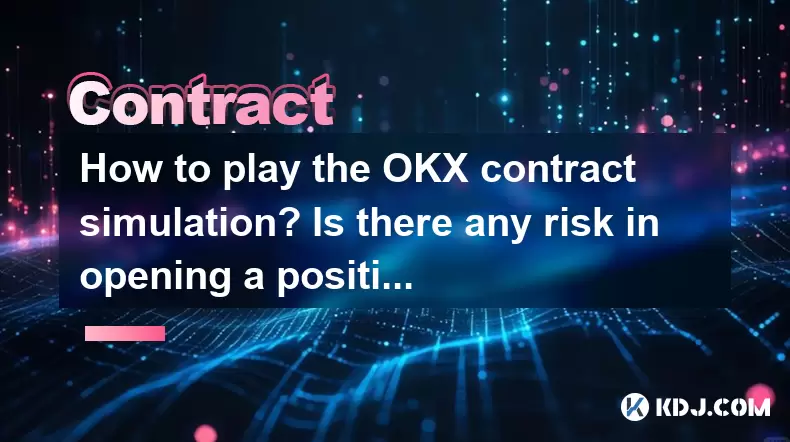-
 Bitcoin
Bitcoin $115200
-2.68% -
 Ethereum
Ethereum $3601
-5.16% -
 XRP
XRP $3.035
-2.96% -
 Tether USDt
Tether USDt $0.9997
-0.04% -
 BNB
BNB $764.5
-5.43% -
 Solana
Solana $168.1
-5.92% -
 USDC
USDC $0.9998
-0.02% -
 Dogecoin
Dogecoin $0.2090
-4.80% -
 TRON
TRON $0.3272
-0.49% -
 Cardano
Cardano $0.7306
-5.00% -
 Hyperliquid
Hyperliquid $39.16
-12.22% -
 Stellar
Stellar $0.3967
-4.96% -
 Sui
Sui $3.566
-5.95% -
 Chainlink
Chainlink $16.55
-6.57% -
 Bitcoin Cash
Bitcoin Cash $552.3
-3.90% -
 Hedera
Hedera $0.2516
-4.69% -
 Avalanche
Avalanche $21.99
-5.75% -
 Toncoin
Toncoin $3.621
-0.28% -
 Ethena USDe
Ethena USDe $1.000
-0.03% -
 UNUS SED LEO
UNUS SED LEO $8.951
0.02% -
 Litecoin
Litecoin $105.9
-3.59% -
 Shiba Inu
Shiba Inu $0.00001232
-5.00% -
 Polkadot
Polkadot $3.640
-5.55% -
 Uniswap
Uniswap $9.048
-7.03% -
 Monero
Monero $301.8
-1.51% -
 Dai
Dai $0.9999
-0.01% -
 Bitget Token
Bitget Token $4.334
-3.66% -
 Pepe
Pepe $0.00001064
-6.17% -
 Cronos
Cronos $0.1367
-5.78% -
 Aave
Aave $259.2
-4.59%
How to play the OKX contract simulation? Is there any risk in opening a position?
The OKX contract simulation offers a risk-free environment for traders to practice strategies using virtual funds, mimicking real market conditions.
May 18, 2025 at 03:00 am

The OKX contract simulation is a valuable tool for traders looking to practice their strategies without risking real funds. This feature allows users to simulate trading in a risk-free environment, which is particularly useful for beginners or those testing new trading approaches. In this article, we will explore how to play the OKX contract simulation and discuss whether there is any risk involved in opening a position within this simulated environment.
Accessing the OKX Contract Simulation
To begin using the OKX contract simulation, you first need to access the OKX platform. Here are the steps to get started:
- Visit the OKX website and log in to your account. If you don't have an account, you will need to create one.
- Navigate to the trading section of the platform. You can usually find this by clicking on the "Trade" or "Markets" tab.
- Select the "Demo" or "Simulation" mode. This option is typically found in the trading interface, allowing you to switch from real trading to simulation mode.
Once you are in the simulation mode, you will have access to virtual funds that you can use to practice trading without any financial risk.
Understanding the OKX Contract Simulation Interface
The OKX contract simulation interface is designed to mimic the real trading environment as closely as possible. Here are some key elements you should familiarize yourself with:
- Order Book: This displays the current buy and sell orders for the selected contract. It helps you understand market depth and liquidity.
- Trading Chart: The chart provides a visual representation of the price movement over time. You can use various technical indicators and drawing tools to analyze the market.
- Order Panel: This is where you will place your buy and sell orders. You can choose between market orders, limit orders, and other types of orders depending on your strategy.
- Position and Balance: In the simulation, you will see your virtual position and balance, which will change as you trade.
Placing Orders in the OKX Contract Simulation
To practice trading in the OKX contract simulation, you need to know how to place orders. Here's a detailed guide on how to do it:
- Select the Contract: Choose the cryptocurrency contract you want to trade. OKX offers a variety of contracts, including Bitcoin, Ethereum, and other altcoins.
- Choose the Order Type: Decide whether you want to place a market order, which executes immediately at the current market price, or a limit order, which executes at a specified price.
- Set the Order Parameters: For a market order, you only need to specify the quantity. For a limit order, you need to set both the price and the quantity.
- Submit the Order: Click on the "Buy" or "Sell" button to submit your order. In the simulation, the order will be executed using your virtual funds.
Managing Positions in the OKX Contract Simulation
Once you have opened a position in the OKX contract simulation, you need to manage it effectively. Here are some tips on how to do that:
- Monitor Your Position: Keep an eye on the market and your position's performance. Use the trading chart and other tools to assess whether your position is moving in your favor.
- Set Stop-Loss and Take-Profit Orders: These orders can help you manage risk and lock in profits. A stop-loss order will automatically close your position if the price moves against you beyond a certain point, while a take-profit order will close your position when it reaches a profitable level.
- Adjust Your Position: Depending on market conditions, you may want to increase or decrease your position size. You can do this by placing additional buy or sell orders.
Is There Any Risk in Opening a Position in the OKX Contract Simulation?
One of the main advantages of the OKX contract simulation is that it allows you to trade without any financial risk. Here's why:
- Virtual Funds: All trading in the simulation is done with virtual funds, so you cannot lose real money.
- No Real-World Impact: The outcomes of your trades in the simulation do not affect your real account balance or any other real-world financial metrics.
- Learning Environment: The simulation is designed as a learning tool, allowing you to experiment with different strategies and learn from your mistakes without any financial consequences.
However, while there is no financial risk, there are other considerations to keep in mind:
- Emotional Impact: Even though you are not risking real money, you may still experience emotional responses to your trades. This can be valuable for learning how to manage your emotions in real trading scenarios.
- Time Investment: Spending time in the simulation takes away from time you could spend on other activities, including real trading or learning other aspects of trading.
Frequently Asked Questions
Q: Can I use the OKX contract simulation on mobile devices?
A: Yes, the OKX platform is accessible on mobile devices through the OKX app. You can switch to simulation mode within the app and practice trading on your smartphone or tablet.
Q: Are the market conditions in the OKX contract simulation realistic?
A: The OKX contract simulation aims to replicate real market conditions as closely as possible. However, there may be slight differences due to the nature of the simulation environment.
Q: Can I save my progress in the OKX contract simulation?
A: Yes, OKX allows you to save your simulation progress. You can log out and return to your simulation later, picking up where you left off.
Q: Is there a limit to the number of trades I can make in the OKX contract simulation?
A: There is no specific limit to the number of trades you can make in the simulation. However, OKX may impose certain restrictions to ensure fair use of the platform.
Disclaimer:info@kdj.com
The information provided is not trading advice. kdj.com does not assume any responsibility for any investments made based on the information provided in this article. Cryptocurrencies are highly volatile and it is highly recommended that you invest with caution after thorough research!
If you believe that the content used on this website infringes your copyright, please contact us immediately (info@kdj.com) and we will delete it promptly.
- Cardano Price, Pi Network, and Crypto Presales: What's the Buzz?
- 2025-08-02 08:50:12
- XRP Fund Success: Teucrium CEO Reveals Trillions on the Horizon
- 2025-08-02 09:10:12
- Challenge Coins: More Than Just Collectibles – A Military Tradition
- 2025-08-02 08:30:12
- Under the Radar: Hunting for 100x Crypto Gems in a Pi Network World
- 2025-08-02 08:30:12
- Bitcoin, Solana, and Altcoin Season: What's Hot and What's Not?
- 2025-08-02 07:10:12
- Toncoin, Rollblock, and the Token Offering Landscape: A New York Minute
- 2025-08-02 07:10:12
Related knowledge

Why is my Bitstamp futures position being liquidated?
Jul 23,2025 at 11:08am
Understanding Futures Liquidation on BitstampFutures trading on Bitstamp involves borrowing funds to open leveraged positions, which amplifies both po...

How to report Bitstamp futures for taxes?
Jul 30,2025 at 08:35am
Understanding Bitstamp Futures and Taxable EventsWhen trading Bitstamp futures, it’s essential to recognize that these financial instruments are treat...

Does Bitstamp offer inverse contracts?
Jul 23,2025 at 01:28pm
Understanding Inverse Contracts in Cryptocurrency TradingIn the realm of cryptocurrency derivatives, inverse contracts are a specific type of futures ...

What is the difference between futures and perpetuals on Bitstamp?
Jul 27,2025 at 05:08am
Understanding Futures Contracts on BitstampFutures contracts on Bitstamp are financial derivatives that allow traders to speculate on the future price...

How to find your Bitstamp futures trade history?
Jul 23,2025 at 08:07am
Understanding Bitstamp and Futures Trading AvailabilityAs of the current state of Bitstamp’s service offerings, it is critical to clarify that Bitstam...

Can I use a trailing stop on Bitstamp futures?
Jul 23,2025 at 01:42pm
Understanding Trailing Stops in Cryptocurrency TradingA trailing stop is a dynamic type of stop-loss order that adjusts automatically as the price of ...

Why is my Bitstamp futures position being liquidated?
Jul 23,2025 at 11:08am
Understanding Futures Liquidation on BitstampFutures trading on Bitstamp involves borrowing funds to open leveraged positions, which amplifies both po...

How to report Bitstamp futures for taxes?
Jul 30,2025 at 08:35am
Understanding Bitstamp Futures and Taxable EventsWhen trading Bitstamp futures, it’s essential to recognize that these financial instruments are treat...

Does Bitstamp offer inverse contracts?
Jul 23,2025 at 01:28pm
Understanding Inverse Contracts in Cryptocurrency TradingIn the realm of cryptocurrency derivatives, inverse contracts are a specific type of futures ...

What is the difference between futures and perpetuals on Bitstamp?
Jul 27,2025 at 05:08am
Understanding Futures Contracts on BitstampFutures contracts on Bitstamp are financial derivatives that allow traders to speculate on the future price...

How to find your Bitstamp futures trade history?
Jul 23,2025 at 08:07am
Understanding Bitstamp and Futures Trading AvailabilityAs of the current state of Bitstamp’s service offerings, it is critical to clarify that Bitstam...

Can I use a trailing stop on Bitstamp futures?
Jul 23,2025 at 01:42pm
Understanding Trailing Stops in Cryptocurrency TradingA trailing stop is a dynamic type of stop-loss order that adjusts automatically as the price of ...
See all articles

























































































